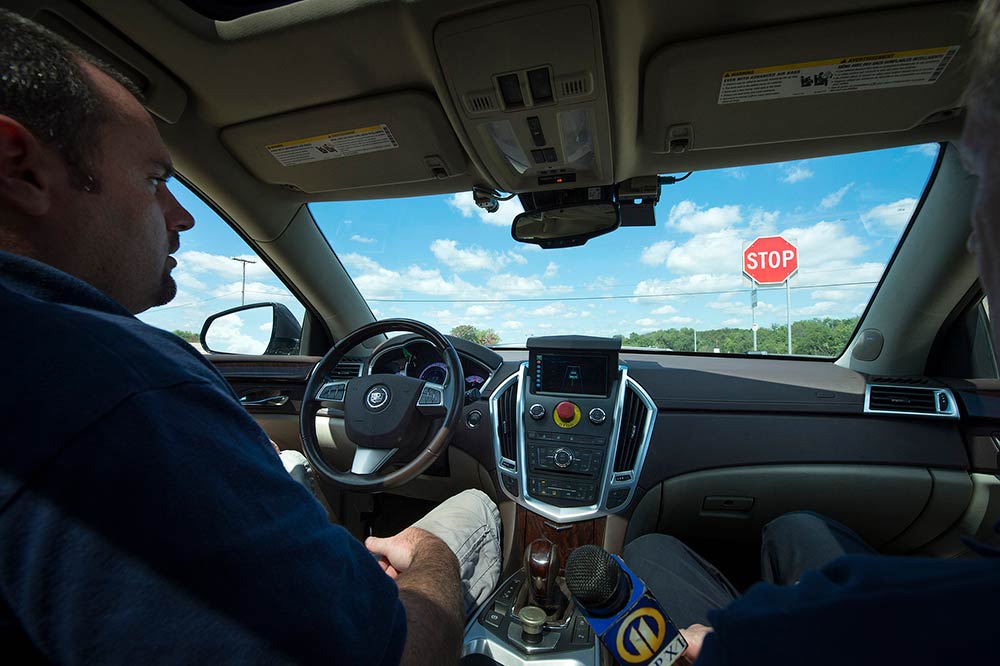They were once an outlandish science fiction fantasy, from “Johnny Cabs” in Total Recall to tour vehicles in Jurassic Park, but now South Australia will test drive new ‘driverless cars’ in a trial to see how they perform in Adelaide’s southern suburbs.
In the trial that’s set to take place in November 2015, car manufacturer Volvo will bring the same vehicle from Sweden that’s presently used in its ‘Drive Me’ project, which is expected to put customers “behind the wheel” (so to speak) by 2017.
When the testing takes place, the Swedish company’s own infamous marketing slogan “bloody Volvo driver” will take on a whole new meaning when the vehicles are spotted on the Southern Expressway on November 7th and 8th.
There will be multiple vehicles conducting simple manoeuvres such as overtaking, lane changing, emergency braking and the use of on and off ramps. Nothing an ordinary driver can’t do, but a vehicle controlled by artificial intelligence has a certain novelty factor attached.
Volvo’s testing of the vehicles in Adelaide will be undertaken in conjunction with Flinders University, Carnegie Mellon University, the RAA and Cohda Wireless.
It’s an ambitious trial by the South Australian government, which in recent years has overseen a significant downturn in automotive manufacturing through the closure of facilities that make vehicles from Ford, Holden and Toyota.
But now the government is making every effort to maintain South Australia as a leader in the automotive sector, with Premier Jay Weatherill saying the technology promises to not only improve safety, reduce congestion and lower emissions, but also to provide a real opportunity for the state to become a key player in the emerging driverless vehicle industry.
“This trial presents a fantastic opportunity for South Australia to take a lead nationally and internationally in the development of this new technology and open up new opportunities for our economy,” Mr Weatherill said.
According to Mr Weatherill, “it’s predicted that within just 15 years”, the international driverless car industry will be worth $90 billion.
Of course, he wants to encourage other global businesses to come to South Australia to develop and test their driverless car technologies. Many of these include General Motors, BMW, Audi, Ford, Mercedes, Renault and tech giant Google.
Although the government is determined to ensure this technology succeeds, its adoption by consumers and fleet managers is likely to be a slow process, mainly due to the fact that it’s an unproven technology that’s still in its relative infancy.
The Australian Fleet Managers Association (AfMA) has provided insight to GovNews about the viability of driverless vehicles in Australia, and those hoping for instant results might be disappointed.
AfMA executive director Mace Hartley said it seems clear vehicle technology is now within reach to enable driverless vehicles, however infrastructure as a critical component is far from adequate.
“Large investments will be required to modify existing systems and less so to incorporate changes into proposed road systems,” Mr Hartley said.
According to Mr Hartley, one of the desired outcomes of the trials is to understand what driverless cars mean for Australia’s national road infrastructure, markings, surfaces and roadside signage.
As expected, driverless vehicles lack the autonomy possessed by a human driver, which according to Mr Hartley leaves existing driverless vehicles used in commercial ways having to travel on fixed routes or railway lines and “don’t mix with public roadways”.
And they have a long way to go in gaining public confidence, since one of the great pass times Australians tend to enjoy is a drive out and having control of the vehicle they’re travelling in.
“I believe it will be many years before we see large volumes of driverless vehicles on Australian roads because beyond the technology required of vehicles and infrastructure, legislation change is also required and potentially the greatest hurdle will be acceptance by the public,” Mr Hartley said.
He also doesn’t believe driverless vehicles will be widespread during the next three to five years given the anticipated investment in infrastructure.
He noted that it’s very different to electric and hybrid vehicle as these generally require less infrastructure depending on fuel types etc.
If trials such as Volvo’s prove that driverless vehicles can be used on Australian roads, they may have a number of applications for local governments, such as garbage trucks and anything that can operate outside of peak times.
But Mr Hartley said that fleet procurement managers will need to consider a number of factors, including the capital expenditure budgets to handle the phase out of traditional vehicles.
“The opportunity of driverless vehicles may also change the fit for purpose analysis as traditional usages are recalibrated,” Mr Hartley said.
He said it remains to be seen how cost effective driverless vehicles will be, however given the potential to reduce accidents, improve fuel efficiency and potential savings from reduction of drivers, “it’s likely to be beneficial”.






